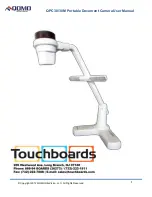
Introduction
Getting Ready
Taking Pictures
Playback
Set Up
GB-16
What Your Camera Can Do
|
Nomenclature
|
Names of the menus and icons shown on the screen
|
LED display
|
FCC
Compliance Statement for American Users
|
Handling Precautions
NEXT
BACK
Contents (Top page) Detailed Contents
Index
Nomenclature
Menus and Settings
Troubleshooting
• When the battery contact plates or battery terminals are soiled, wipe them with a dry cloth. Fingerprints or
other soiling on the camera's battery contact plates or on the battery terminals can cause significant electrical
resistance and reduce the number of available shots. Wipe the camera's battery contact plates and the
battery terminals clean with a soft, dry cloth.
• The first time you use rechargeable batteries after purchasing them, you should charge and discharge the
batteries 2 or 3 times. You should also charge rechargeable batteries that have not been used for 1 week or
longer. (This is due to an effect called "deactivation", whereby rechargeable batteries left for long periods
gradually self-discharge, resulting in the formation of a film on the internal terminals that hinders the flow of
current.)
Even rechargeable batteries that have not been used naturally discharge and lose their capacity if stored for
long periods. When this occurs, recharge the batteries before using them. At temperatures of 30°C or higher,
self-discharging may occur frequently and should be taken into account when selecting a storage location.
(
Æ
See "Charging and discharging batteries".)
• Do not top-up the charge in a rechargeable battery. Whenever possible, charge batteries fully once they are
completely discharged rather than topping up the charge. (This is to avoid the "memory effect", whereby
repeated topping up of the battery charge without fully discharging the battery results in a lower apparent
battery capacity and shortens the time for which the battery can be used, even though the battery has not
reached the end of its service life.)
Even when "LOW BATTERY" is displayed after you take a picture, you may still be able to turn the camera on
in Playback mode. When this occurs, the battery charge is not fully depleted and you should discharge the
batteries fully before recharging them. (
Æ
See "Charging and discharging batteries".)
• Remove the batteries from the camera if you do not intend to use it for a long period. Even when the camera
is turned off a very small current continues to flow. Leaving the batteries in the camera for a long period can
result in the batteries being overdischarged and unusable even when recharged.
• If batteries quickly run out of charge, they may be subject to the memory effect or they may be deactivated or
have reached the end of their service life. The memory effect and deactivation can be corrected by
repeatedly charging and discharging the batteries. If the batteries run out of charge after you have taken only
a few shots, the most likely cause is that the battery capacity is low, so that you can take shots immediately
after charging the batteries but the number of available shots tends to fall to just a few 2 or 3 days later.
Replace batteries that have reached the end of their service lives with new batteries.
F
CAUTION
• When charging batteries, use the dedicated charger and follow the
procedures provided in the "Instructions" for the batteries and charger to
ensure correct charging.
• When you are using multiple batteries, they should all be charged at the same
time. Do not use charged and discharged batteries or different types or
brands of battery together.
















































